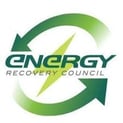 Waste-to-Energy is a “key greenhouse gas mitigation technology.” (MORE)
Waste-to-Energy is a “key greenhouse gas mitigation technology.” (MORE)
 Waste-to-Energy is “one of eight technologies likely to make a meaningful contribution to a future low-carbon energy system.” (MORE)
Waste-to-Energy is “one of eight technologies likely to make a meaningful contribution to a future low-carbon energy system.” (MORE)
 “California Waste-to-Energy facilities provide net avoided methane emissions over waste otherwise disposed in California landfill.” (MORE)
“California Waste-to-Energy facilities provide net avoided methane emissions over waste otherwise disposed in California landfill.” (MORE)
 “[C]ombusting waste in the three waste-to-energy thermal facilities in California results in net negative greenhouse gas emissions.” (MORE)
“[C]ombusting waste in the three waste-to-energy thermal facilities in California results in net negative greenhouse gas emissions.” (MORE)
 “As recycling and incineration with energy recovery are increasingly used, net greenhouse gas emissions from municipal waste management are expected to drop considerably by 2020.” (MORE)
“As recycling and incineration with energy recovery are increasingly used, net greenhouse gas emissions from municipal waste management are expected to drop considerably by 2020.” (MORE)
 “Waste-to-Energy generates a renewable energy source and reduces carbon emissions by offsetting the need for energy from fossil sources and reduces methane generation from landfills.” (MORE)
“Waste-to-Energy generates a renewable energy source and reduces carbon emissions by offsetting the need for energy from fossil sources and reduces methane generation from landfills.” (MORE)
 “Under the Obama Administration Clean Power Plan promulgated in 2015, new Waste-to-Energy facilities were eligible to generate Emission Rate Credits.” (MORE)
“Under the Obama Administration Clean Power Plan promulgated in 2015, new Waste-to-Energy facilities were eligible to generate Emission Rate Credits.” (MORE)
 “We find that municipal solid waste combustion is a better alternative than landfill disposal in terms of net energy impacts and carbon dioxide equivalent greenhouse gas emissions.” (MORE)
“We find that municipal solid waste combustion is a better alternative than landfill disposal in terms of net energy impacts and carbon dioxide equivalent greenhouse gas emissions.” (MORE)
 “Increasing Waste-to-Energy capacity appear to provide the greatest potential for controlling future methane emission from landfilled waste.” (MORE)
“Increasing Waste-to-Energy capacity appear to provide the greatest potential for controlling future methane emission from landfilled waste.” (MORE)
 “We therefore commit to further reduce, reuse, and recycle waste (3Rs), and to increase energy recovery from waste.” (MORE)
“We therefore commit to further reduce, reuse, and recycle waste (3Rs), and to increase energy recovery from waste.” (MORE)
 “Harvesting these leftover materials as solid waste energy sources could provide multiple environmental benefits.” (MORE)
“Harvesting these leftover materials as solid waste energy sources could provide multiple environmental benefits.” (MORE)
 “Trash burned at a Waste-to-Energy facility doesn’t’ generate methane, as it would at a landfill; the metals that would have been sent to the landfill are recycled instead of thrown out; and the electricity generated offsets the greenhouse gasses that would otherwise have been generated from coal and natural gas plants.” (MORE)
“Trash burned at a Waste-to-Energy facility doesn’t’ generate methane, as it would at a landfill; the metals that would have been sent to the landfill are recycled instead of thrown out; and the electricity generated offsets the greenhouse gasses that would otherwise have been generated from coal and natural gas plants.” (MORE)

"If the goal is greenhouse gas reduction, then [waste-to-energy] should be considered as an option under U.S. renewable energy policies.” (MORE)
 "Since any possible health effects are likely to be very small, if detectable, studies of public health around modern, well managed municipal waste incinerators are not recommended." (MORE)
"Since any possible health effects are likely to be very small, if detectable, studies of public health around modern, well managed municipal waste incinerators are not recommended." (MORE)
 "In an examination of recycling rates of 700 communities in 21 states, which rely on waste-to-energy for their waste disposal, it demonstrated that this means of disposal had no impact on recycling. In fact, overall communities using waste-to-energy had a slightly higher level of recycling than that observed across their states and across the United States." (MORE)
"In an examination of recycling rates of 700 communities in 21 states, which rely on waste-to-energy for their waste disposal, it demonstrated that this means of disposal had no impact on recycling. In fact, overall communities using waste-to-energy had a slightly higher level of recycling than that observed across their states and across the United States." (MORE)
 Third Way, a centrist think tank that offers fresh thinking and modern solutions to the most challenging problems in U.S., calls for the continued support of Energy-from-Waste due to the avoided emissions from landfills and low carbon energy generation that supplements other variable renewables. (MORE)
Third Way, a centrist think tank that offers fresh thinking and modern solutions to the most challenging problems in U.S., calls for the continued support of Energy-from-Waste due to the avoided emissions from landfills and low carbon energy generation that supplements other variable renewables. (MORE)
 “Dioxin emissions from modern energy from
“Dioxin emissions from modern energy from
waste plants – all of which must now meet the very stringent requirements of the EU Waste Incineration Directive – are very small compared with other common environmental sources such as building and forest fires, and even fireworks. The emission limits under this directive are lower than
those for non-waste energy generation sources.” (MORE)
 The Massachusetts Department of Public Health found prevalence of childhood asthma in the Merrimack Valley—where several EfW facilities are located—was not associated with emissions of particulate matter (PM10) or volatile organic compounds (VOCs) from the local stationary source. (MORE)
The Massachusetts Department of Public Health found prevalence of childhood asthma in the Merrimack Valley—where several EfW facilities are located—was not associated with emissions of particulate matter (PM10) or volatile organic compounds (VOCs) from the local stationary source. (MORE)
 "Overall the assessment reveals that modern, properly permitted waste management facilities are unlikely to
"Overall the assessment reveals that modern, properly permitted waste management facilities are unlikely to
have an environmental health impact on surrounding communities." (MORE)

.png?width=288&height=66&name=COVANTA%20without%20tagline%20(1).png)

